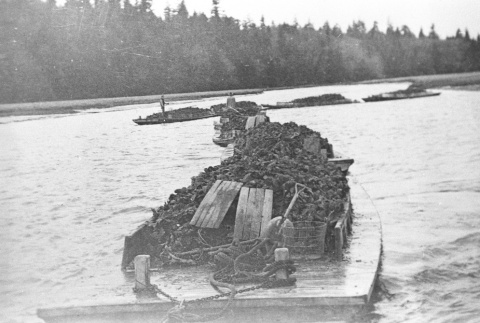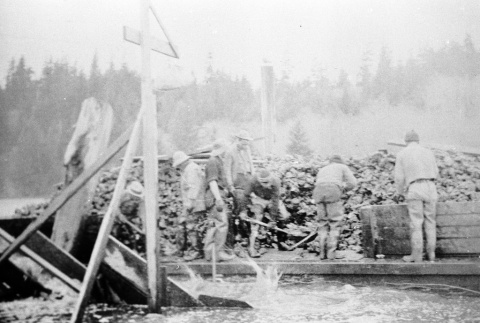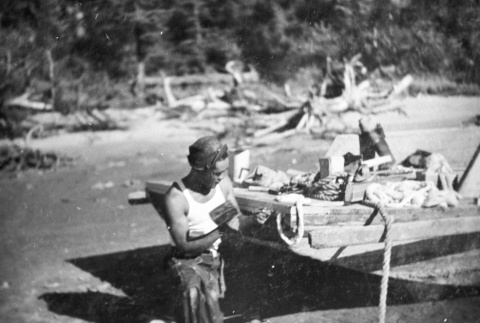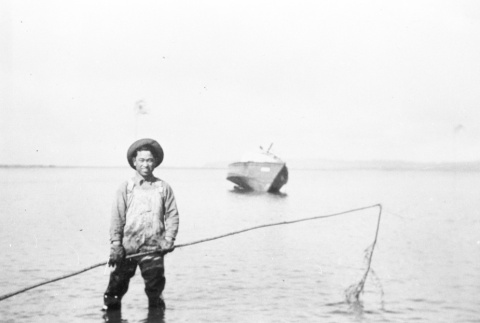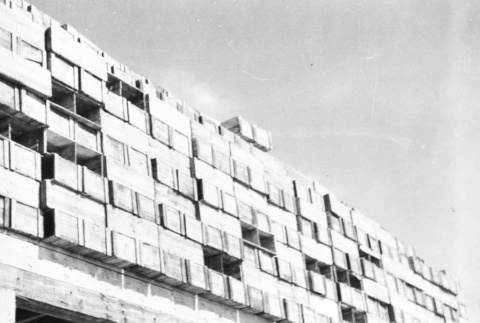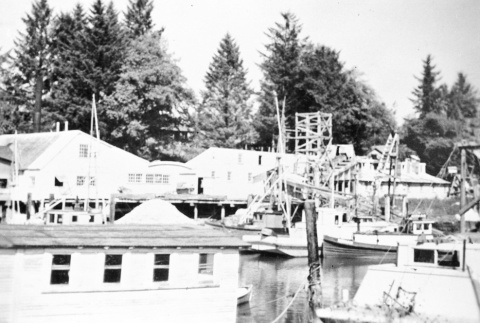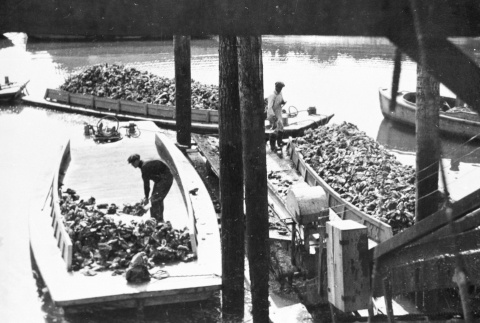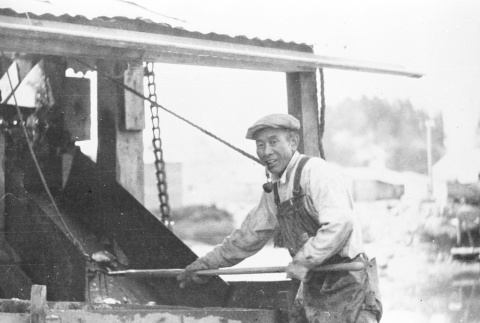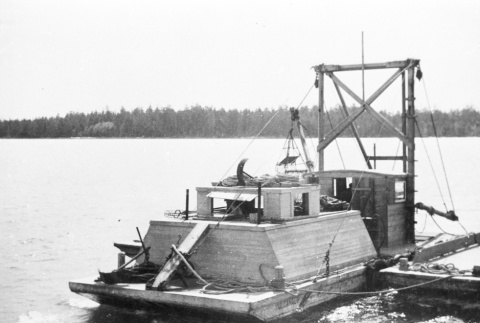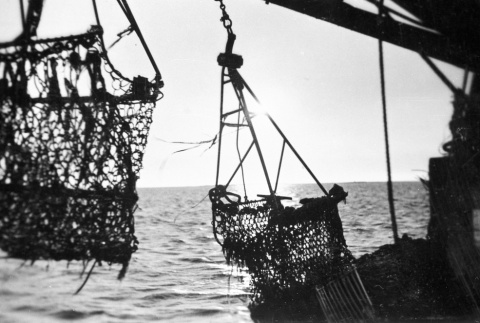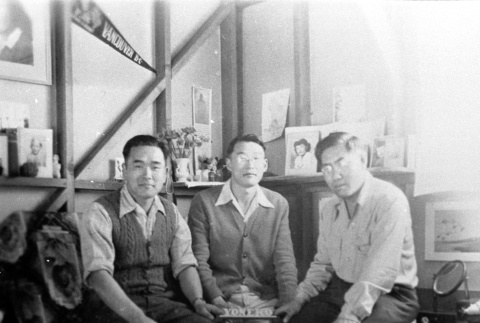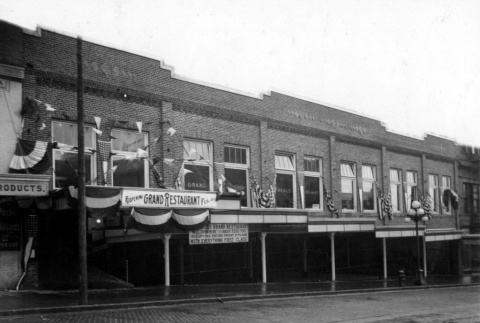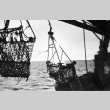Mitsuoka Collection ddr-densho-15
120 items
120 items

img
Oyster-farm station house (ddr-densho-15-104)
The station house is where oyster farmers lived during the harvesting season. The house was erected on pilings. In the foreground is a bateau, or small barge, that was used to haul oysters.
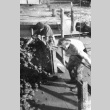
img
Unloading oysters from a bateau (ddr-densho-15-105)
These two farmers are unloading oysters from a bateau for processing. Left to right: Chuck (last name unknown) and Jack Tanabe.
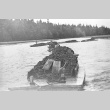
img
Oyster bateaux (ddr-densho-15-106)
The seven oyster bateaux shown here are about to be towed to the processing area.
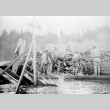
img
Unloading oysters from a bateau (ddr-densho-15-107)
These workers are unloading oysters from a bateau at the processing area. The oysters were shoveled into a hopper and onto a conveyor belt that led into the processing area, where they were opened.
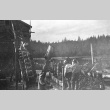
img
Unloading oysters from a bateau (ddr-densho-15-108)
These workers are unloading oysters from a bateau at the processing area. The oysters were shoveled into a hopper and onto a conveyor belt (left side of image) that led into the processing area, where they were opened.
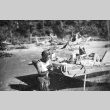
img
Caulking an oyster bateau (ddr-densho-15-110)
Norio Mitsuoka caulking an oyster bateau to make it waterproof.

img
Marking an oyster bed (ddr-densho-15-111)
Emil Nakao marking an oyster bed. The bed was marked with long poles at low tide, allowing farmers to gather the oysters with tongs at high tide.

img
Seed oyster boxes (ddr-densho-15-112)
These boxes once contained seed oysters from Japan. The oysters were strewn in the beds where oyster spawn or "spats" would attach themselves to the shells. The oysters were harvested the following season.
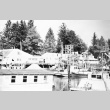
img
Willa Point Oyster Company (ddr-densho-15-113)
The Willa Point Oyster Company canned local oysters for shipping.
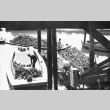
img
Unloading oysters from a bateau (ddr-densho-15-114)
Workers unloading oysters at the Willa Point Oyster Company, where the oysters were canned for shipping.

img
Oyster farmer (ddr-densho-15-115)
Mr. Mukai steering oysters into a box, where they were steamed open for canning.
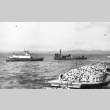
img
Oyster bateau and scow (ddr-densho-15-116)
The scow (upper right) and oyster bateau (lower right) harvested oysters together. The scow was equipped with a winch-operated dredge, which was lowered and dragged across the oyster beds at high tide. Oysters were then loaded onto the bateau and delivered to the processing plant. Both scows and bateaux had to be towed.
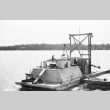
img
Motorized scow (ddr-densho-15-117)
This scow belonged to G. T. Mogan, one of the organizers of the Willa Point Oyster Company. The scow was equipped with a motorized dredge that farmers used to harvest oysters at high tide. The empty dredge can be seen on the left side of the boat toward the back. Two bateaux are connected to the …
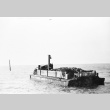
img
Scow (ddr-densho-15-119)
The scow was used to gather oysters. A winch-operated dredge was dragged across the oyster beds at high tide, and the harvested oysters were then emptied onto the scow or a bateau. In order to deliver the oysters to the processing plant, both the scow and the bateau had to be towed.
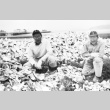
img
Two men with oyster shells (ddr-densho-15-120)
Hiroshi (left) and Masaru Odoi punched holes into oysters shells. The shells were strung on wire and hung on racks in the water to catch oyster spawn. Afterwards, farmers spread the shells over a bed. This was an experimental way of hatching oysters in the 1930s.
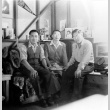
img
Japanese Americans inside barracks (ddr-densho-15-123)
Left to right: Norio Mitsuoka, Bob Ikeda, and Tak Hori sit inside Yoneko Tanaka's barracks.

img
Grand Restaurant (ddr-densho-15-124)
The Grand Restaurant was operated by George and Kane Mitsuoka. It was located on First Avenue between Pike and Union Streets.
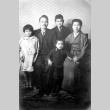
img
Family portrait (ddr-densho-15-125)
The Mitsuoka family. Left to right: Reiko, George, Masahiro (Roy), and Kane Mitsuoka. Norio Mitsuoka stands behind Masahiro, between his parents.


